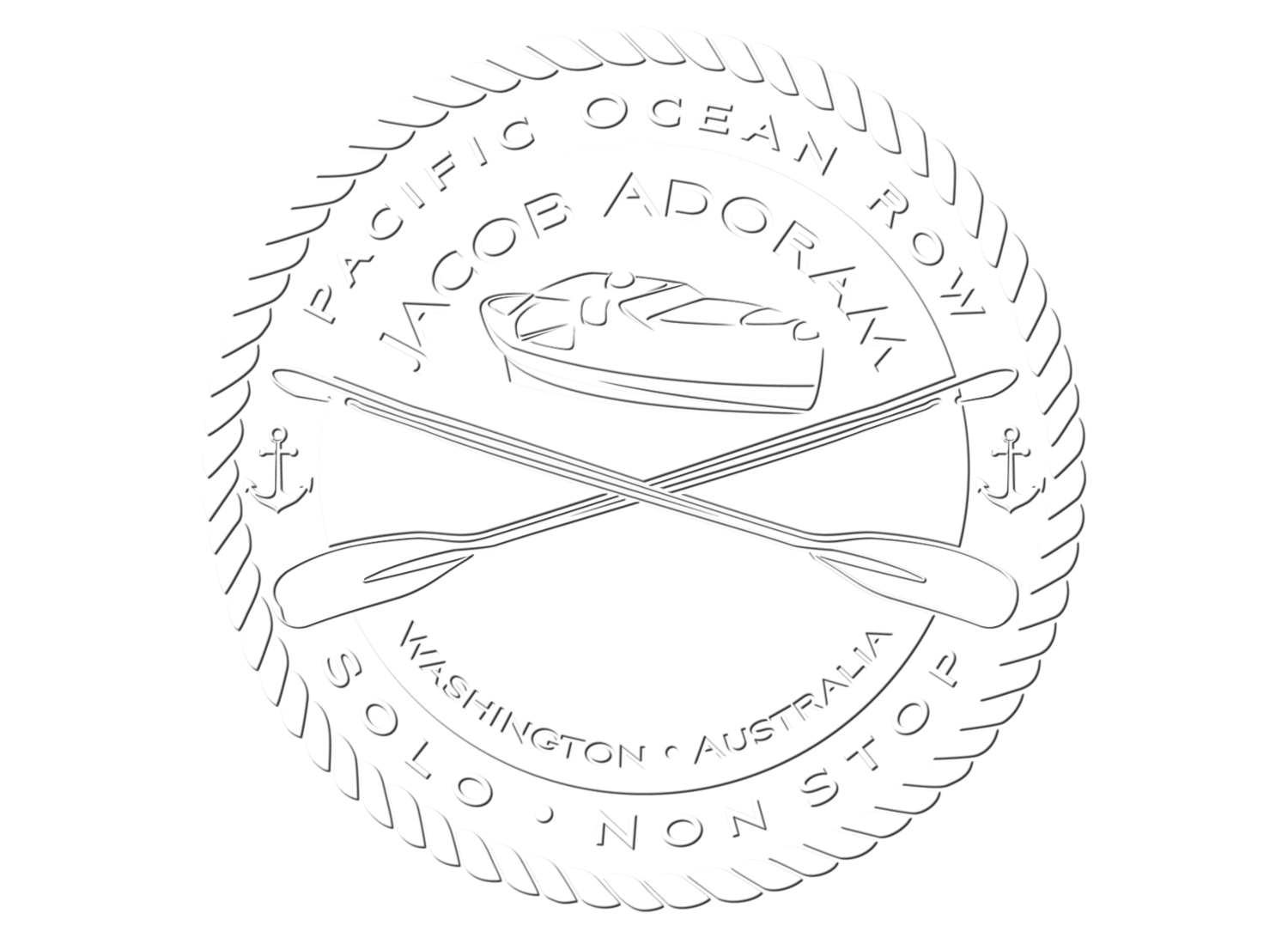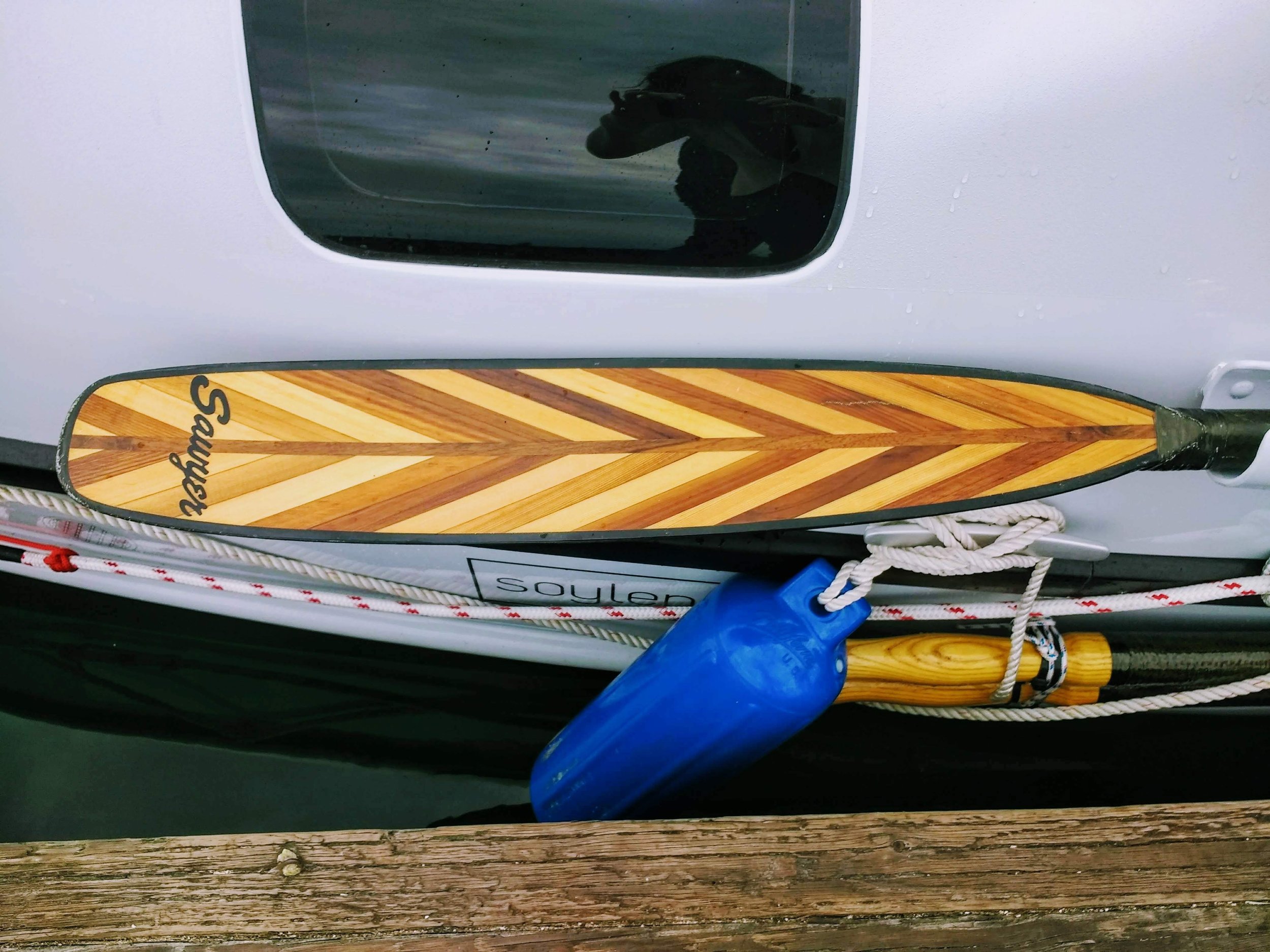It's 10 minutes before sunset. I stop rowing and temporarily stow the oars. This has always been my favorite time of day. It's a nice reminder, a brief shift in perspective as the sun recedes below the horizon. I watch as the final rays stretch their reach, illuminating until stopped by the barriers of physics itself. The clouds tell the story, faithfully illuminated from above into whites and grays. Until now. The low angle rays begin illuminating high altitude clouds from below, descending to the underbelly of lower clouds as the earth rotates away. The whites and grays transform into pastels beyond imagination. The distant far west clouds are something else now. They are bands of pure radiant gold.
Yet here I am, thinking about it. And watching. Today I'm lucky enough to have company for the celestial light show. It's another Booby! He's circling. I raise the hardtop and secure it open with the makeshift doorstop for better viewing. Then I open the hatch directly above the center footwell and use the lip of the opening as a seat. This is a comfortable resting position, mainly because my hands are now the 4th and 5th points of contact if needed. Nice and stable.
The Booby is interested in Emerson. Between passes low in the troughs, he hesitates directly above the boat, eyes darting left and right. The tail feathers spread, the wings broaden, giving the Booby an extra few seconds of reconnaissance before slipping back into a trough. This is a splendid compliment to the sun show in progress. On the next pass, the Booby commits - it's time for a landing. Emerson is 28 feet long, with plenty of flat surfaces. This Booby instead decides to land on the thin edge of the raised hardtop, about 3 feet from my face. He ignores me entirely.
This Booby is of the Blue-Footed variety. The beak also contains a peculiar blue hue. Say that one 10 times fast - peculiar blue hue, peculiar blue hue. Impossible. I should delete that. Regardless, this guy isn't looking for a final rest, he's still young and strong. It's just a short stop for a bit of grooming. Balancing on that edge would be a nightmare, well - I guess for a human. The door itself moves maybe 1 inch, abruptly. It's also attached to a boat that is rocking back and forth 20-25 degrees at the moment. Yet this is where grooming must take place. His webbed feet awkwardly wrap around the thin edge of the hardtop, the balancing act taking considerable effort. His wings are outstretched in anticipation of falling more so than stable and ready to groom. It's no matter, grooming must go on.
I watch this bird with amazement and some level of envy. This is by far the worst place to groom aboard Emerson. The Booby is wings in, head turned, and beak nibbling maybe 20% of the time. I would've aborted this endeavor after 60 seconds with the definition of insanity repeating in my head. Not this guy. Without fail, 80% balancing followed by 20% grooming. No frustration, no particular concern, no identifying new grooming locations. This is it. It's a bird at a place trying to do a thing, that's it. It's so beautifully simple.
Yet here we are, together. At the moment, we have nearly identical life objectives. Eat, rest, groom when required, and keep moving. We are the same, except the obvious - the awareness. And so it comes back, the pastels faded, the gold worn dull. But for a moment, however brief, I was less in my head and more out there with the Boobies. In that place, it doesn't matter that Mr. Blue Foot selected an outrageous thin perch, nor does it matter that I made the outrageous choice of trying to row an ocean. We're just here. Let's get after it, even if the world is against us 80% of the time.
Paddle On
P.S. I'm aware I'm not technically paddling. Be more like Mr. Blue Foot - who cares.
P.P.S. I was unable to coordinate the delivery of equipment as I passed Hawaii. Unfortunately, there will be no documentary.
P.P.P.S. The Garmin map will no longer be updating. I lost the device after the final charging cable caught fire. Well, it was more of a red, smoldering, smoking, rubber dripping situation. Everything is under control, just no more text messages.
P.P.P.P.S. David Birch at the Starpath School of Navigation in Seattle is putting together a really cool Google Earth application for everyone to use. You'll be able to see real-time updates and select overlays that interest you. More to follow.
P.P.P.P.P.S. How many P's is too many? Make it stop! Mr. Blue Foot wasn't ignoring me. When I reached out towards him, there were loud noises and aggressive beak movements. We're cool now.



